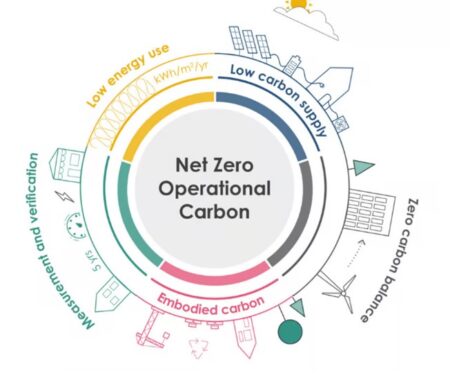Sustainability and ESG in healthcare property
Jesse Putzel, director of ESG at Primary Health Properties (PHP), discusses the importance of Environmental Social Government for the health sector

ESG reflects the mounting pressure on healthcare leaders to address key issues, from climate impact and challenging nature to the social impact of operations and investments
Environmental Social Governance (ESG) or sustainability in business is increasingly important for companies in all sectors. But, for those operating in the built environment, including the healthcare property space, there is mounting pressure to address a range of issues, from climate impact and challenging nature to the social impact of operations and investments.
Despite some economic pressures, ESG and sustainability remain priorities for investors, in part driven by new standards, regulations and incentives, particularly in Europe and the United States.
The International Sustainability Standards Board (ISSB) reporting guidelines for business[1] have harmonised reporting standards, aligning reporting internationally and are being adopted or mandated by governments worldwide, the UK included.
The EU Corporate Sustainability Reporting Directive (CSRD)[2], imposes challenging requirements for companies operating in Europe, extending to their global operations.
And these regulatory trends and investor demand for ESG, mean companies are having to step out of their comfort zones.
In the past, the healthcare space as it relates to buildings, was perhaps behind others on sustainability.
There was rarely talk of measuring carbon, let alone net zero, likely given other pressures and priorities that are unique to healthcare.
However, the dial is moving and companies operating in healthcare property have either already been changing their approach, or will need to do so.
What issues to focus on
ESG encompasses a wide spectrum of issues. Which are most relevant, or material will differ from company to company.
Each business should assess what the most-material issues are for its operations and its stakeholders.
Identifying the key impacts, but also opportunities, is key. Then, depending on the level of control and influence a company has, different strategies will be needed.
There are issues which will apply to any company, albeit with different implications depending on business model.
Outlined below are three areas of particular and growing importance now.
Social impact, beyond the obvious
Healthcare property has obvious social benefits and is rightly seen as a socially-positive area to invest. However, just being in the space doesn’t tick all the boxes anymore.
Companies must be conscious of the impact on their own employees, that they create a culture of equality, diversity, and inclusion and that they offer support and development opportunities to attract the best talent.
There can also be potential negative social impacts to deal with, especially in the value chain.
Ethics in supply chains is coming under increasing scrutiny, with growing awareness of forced labour and modern slavery risks.
An example which is relevant to many in healthcare property is Solar PV, a positive technology that can have a dark side.
In recent years there has been increasing awareness of human rights abuses in the manufacture of polysilicon (a key ingredient of solar panels)[3].
Therefore, identifying higher-risk products and either engaging with suppliers or using different ones will be important going forward.
Beyond avoiding negative impacts, there is a growing focus on creating a wider positive social impact.
The rise of concepts like social value and social return in investment, put a focus on companies understanding their real impact on society and backing this up with data.
The social aspects of ESG or social value can include all the ways a company interacts with employees, suppliers, customers, and their local communities.
In the built environment, we create added social value when buildings, places, or infrastructure support environmental, economic, and social wellbeing. This may be through the way construction projects are procured (creating new employment), or in the way buildings are designed and operated (enhancing people’s wellbeing).
A recent example is the ‘Designing for Everyone toolkit’[4], developed to help GP practices and health centres improve the physical environment in buildings for people with learning disabilities, autism, anxiety, and those who are neurodiverse.
There is going to be a growing focus on the measurement and disclosure of social impact, which can be challenging to do.
Starting now will benefit companies ahead of any stronger requirements or regulation.
Targeting net zero
Those in healthcare property need to be aware of what net zero carbon means and what is expected.
Where widely-different approaches were used in the past, the industry is converging around shared and accepted definitions and frameworks. These include the UK Green Building Council’s Framework Definition for Net Zero Carbon Buildings[5], the Climate Risk Real Estate Monitor (CRREM) transition pathways for energy and carbon intensity (which include UK Healthcare targets)[6], the London Energy Transformation Initiative (LETI) operational and embodied carbon benchmarks[7], and the RICS whole life carbon assessment standard[8].
Together these outline a set of standards and practices which should be followed to achieve net zero carbon buildings.
Linked with these standards, but specific to healthcare buildings, is the NHS Net Zero Carbon Building Standard[9], which is setting a benchmark for healthcare buildings.
While these standards are detailed, and differ in some aspects; the core of what a net zero carbon building should encompass is largely agreed, namely where:
- Energy use intensity (kWh/m2), covering all the energy used by a building, is minimised, ideally aiming for minimum performance thresholds e.g. CRREM UK Healthcare or more-ambitious NHS net zero targets
- There are no fossil fuels on site (where not possible, there should be a plan to remove them entirely in future, with interim hybrid approaches where possible)
- Onsite renewable energy generation is maximised where possible
- Embodied carbon of materials (in new constructions or refurbishments) is measured and minimised, with residual emissions offset. Ideally targets are set to limit ‘upfront embodied carbon’ in line with industry benchmarks e.g. LETI
Performance in use will be monitored to prove targets are met or, where not, to intervene to optimise performance.
Getting consistency across industry here is key. If energy use is not minimised, it will be difficult to decarbonise the grid.
This also benefits end users who can operate buildings with less cost.
Getting a handle on embodied carbon is also vital as buildings move to operating with net zero emissions.
This approach will soon be required for any companies seeking to have an approved science-based target, with the upcoming launch of their building’s guidance. It will also become part of the updated BREEAM v7, both due to land later in 2024, as well as a Net Zero Buildings certification[10] standard.
Anyone not already aware of these definitions, metrics, and targets, should get up to speed and begin to assess how they can be incorporated into projects and future building improvements.
Nature and biodiversity
The link between nature, biodiversity, and health and wellbeing is increasingly clear. And healthcare property can have a part to play.
Nature, and how companies interact with it (directly and indirectly), is the next hot topic.
In September 2023, the Taskforce on Nature-related Financial Disclosures (TNFD) published its final recommendations for nature-related risk management and disclosure[11].
A growing number of companies have become early adopters of TNFD, including financial institutions and asset managers involved in the property sector, and the number is set to grow.
The recommendations are based on the work and framework of TCFD and, if they follow the same trajectory, may become mandatory for many.
In addition, from April 2024 most construction work in the UK requiring planning permission will need to comply with biodiversity net gain.
While not all projects will need to achieve a 10% net gain in biodiversity, additional assessments may still be required.
At the sharper end, projects will need to plan to deliver biodiversity net gain on site or budget for purchase of offsite biodiversity credits.
But the opportunity for healthcare property shouldn’t be ignored.
Nature is good for health and can also help to safeguard and futureproof buildings, not least in helping to adapt to inevitable climate changes.
References
[1] https://www.ifrs.org/issued-standards/ifrs-sustainability-standards-navigator/
[2] https://finance.ec.europa.eu/capital-markets-union-and-financial-markets/company-reporting-and-auditing/company-reporting/corporate-sustainability-reporting_en
[3] For more information see Sheffield Hallam Universities ground breaking research https://www.shu.ac.uk/helena-kennedy-centre-international-justice/research-and-projects/all-projects/over-exposed and a guide to help companies assess and tackle risks in the solar PV supply chain https://www.actionsustainability.com/solar-pv-guidance/
[4] https://dimensions-uk.org/wp-content/uploads/Guide-for-cognitively-inclusive-design-in-primary-care-environments-FINAL.pdf
[5] https://ukgbc.org/resources/net-zero-carbon-buildings-a-framework-definition/
[6] https://www.crrem.eu/tool/
[8] https://www.rics.org/profession-standards/rics-standards-and-guidance/sector-standards/construction-standards/whole-life-carbon-assessment/unlocking-sustainability-exploring-rics-whole-life-carbon-assessment-wlca-standard
[9] https://www.england.nhs.uk/estates/nhs-net-zero-building-standard/
[10] https://www.nzcbuildings.co.uk/
[11] https://tnfd.global/publication/getting-started-with-adoption-of-the-tnfd-recommendations/#publication-content

